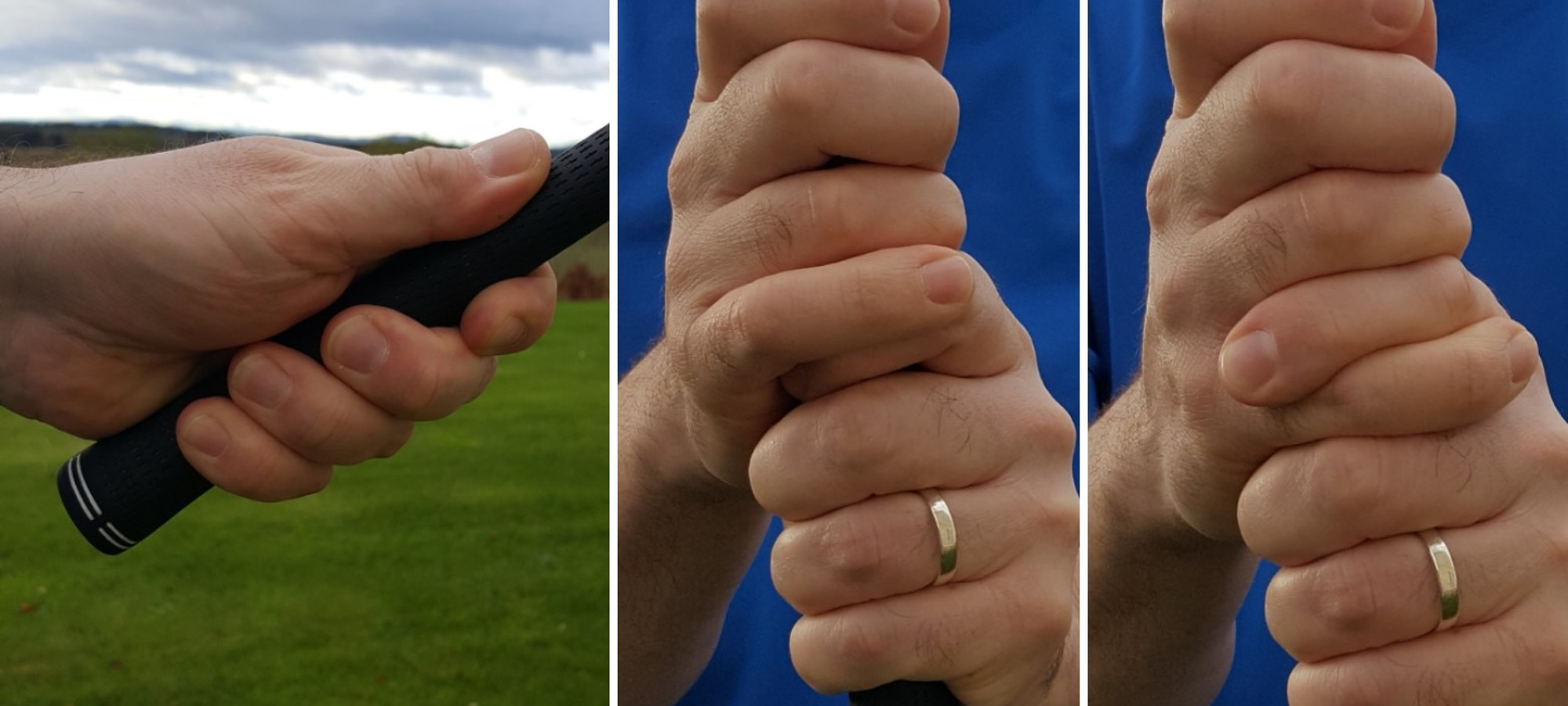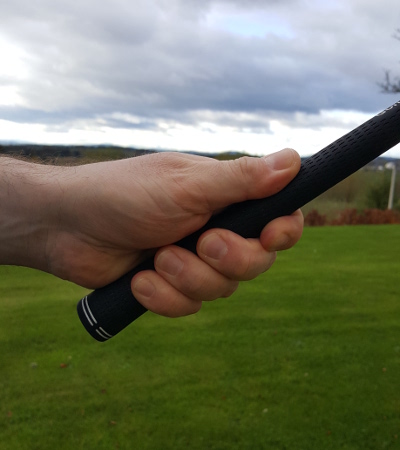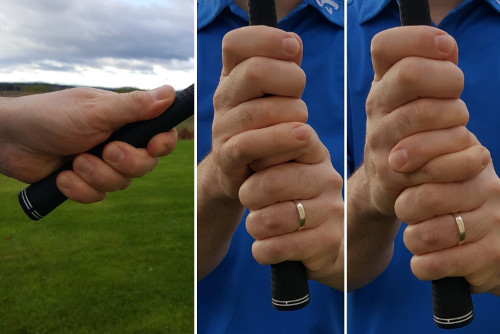
Today, we look at some extra thoughts on the golf grip, following on from my previous blogs, Part 1: The grip is key to a good swing; Part 2: The grip is the biggest influence over club face alignment and Part 3: A good grip helps control the club face without compromising speed.
Grip size
This is often overlooked by golfers, but it’s very important. If your grips aren’t the right size for you, then there’s a good chance that you’ll never develop a sound grip. That will have a knock-on effect right through your game. Leading grip makers Lamkin and Golf Pride both have good size guides on their websites, which will be a good starting point if you've never checked your size before. I also use the following simple check with golfers.
Take your top hand grip. When you curl your fingers around the grip, your fingers should be barely touching the pad of the hand at the base of your thumb. Fingers pressing in means the grip is too thin, while a gap means the grip is too thick.

Types of grips
There is a huge selection of grips available. Lamkin and Golf Pride are the two biggest grip companies and their grips are all good quality. Which style you go for should come down to what feels best to you. Try to get a hold of the grips and feel them for yourself, preferable grips attached to clubs, before you decide.
Looking after your grips
It obviously depends on how much you’re playing, but you should be having your clubs re-gripped every 2 years or so. Certainly, once they start losing their tackiness and go hard and shiny then it’s time to change. However, you can help to keep your grips in good condition longer by giving them a regular clean with hot, soapy water to remove dirt.
Connecting the hands: Overlap or Interlock?


I generally don’t advise the baseball grip, as it doesn’t connect the hands together, and very few good players have used it. Interlocking is often recommended to golfers with smaller hands, and there’s maybe something in that, as it does physically lock the hands together. Golfers with bigger hands and fingers, can find interlocking uncomfortable.
The overlap grip (or Vardon grip) is the most common style. If you’re new to the game I’d suggest experimenting between interlock and overlap and going with whatever feels best.
Do you need a glove?
Most golfers wear a glove on their top hand. Is it important? I’m not sure. I wear a glove, but I’m happy hitting without one too. Maybe for golfers with less hand strength, it helps. However, I think they’re certainly not an essential piece of kit. That all said, I’d recommend keeping some rain gloves in your bag. I find them a big help when my grips get wet.
Grip pressure
There are lots of old clichés with this; holding a bird in your hands, a tube of toothpaste etc. Like a lot of things in golf, just avoid the extremes and you’ll be ok. So not tight or loose. Remember, we want a grip that allows us to both control the club and to create speed.
Closing thoughts
I hope you’ve enjoyed the grip series and found it helpful. The grip is such an important part of developing a good game. If you do think that your grip could be improved (and see part 1 of the series to help you answer that question), then I’d be happy to help you.



